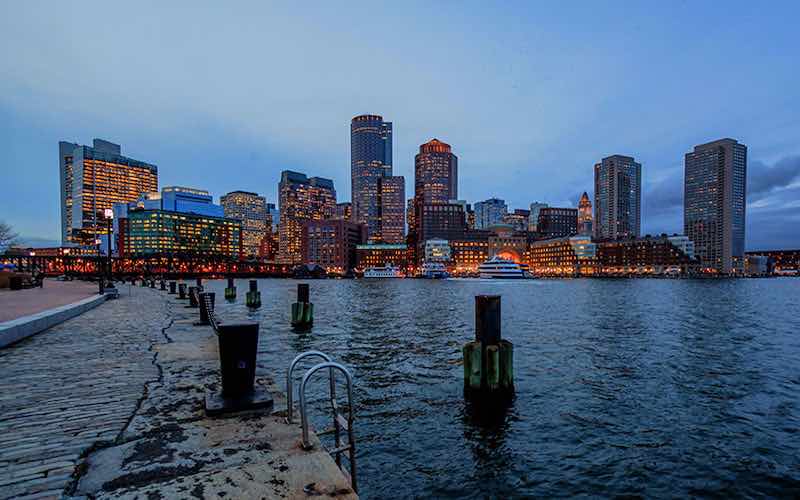
Photo: Roberto Zingales (CC BY-SA 2.0) via Flickr
May 19, 2022 (BOSTON, MA) – Conservation Law Foundation (CLF) has developed an online tool that highlights the tradeoffs between increased development and the public’s right to access waterfront areas. Massachusetts residents are guaranteed access to the waterfront under state law, but development projects are sometimes allowed to deviate from the rules protecting that access. In those situations, the developer must provide some public benefit to compensate, and this calculator is a way of estimating the dollar value of that compensation.
“The public has a right to know how much value developers are truly gaining when they depart from waterfront rules,” said Deanna Moran, CLF Director of Environmental Planning. “This calculator allows us to put a dollar value on the replacement public benefits offered by developers for the first time. This increased transparency will allow residents and regulators alike to better evaluate new waterfront projects and understand the tradeoffs at play.”
CLF developed the tool in partnership with HR&A advisors.
“Boston Harbor Now sees great value in a tool that clearly measures the value of development on tidelands to the citizens of the Commonwealth,” said Kathy Abbott, President and CEO of Boston Harbor Now. “Whether in Dorchester, Downtown, or East Boston, this provides a consistent approach across all projects and allows community members to define what adequate mitigation looks like rather than relying solely on the development community to define the terms. This can build trust and ultimately help to build a better waterfront for all.”
This tool comes on the heels of the City of Boston’s announcement that it will embark on a Municipal Harbor planning process for the East Boston waterfront, which will determine what types of projects are allowed to be built in the area and what future public access to the water will look like.
“For environmental justice communities along the coast, Chapter 91 is a key legal mechanism for protecting our access to the waterfront,” said John Walkey, Director of Waterfront and Climate Justice Initiatives at GreenRoots. “When developers negotiate trade-offs and mitigation deals, it is confusing for advocates to know exactly what is being negotiated away. The tidelands calculator helps provide greater transparency and a clear analysis of what is being offered to the community and what is being taken. We are very pleased to have this tool available to us as we engage in critical planning discussions, such as those that will soon be starting on the East Boston waterfront.”
“This unique tool aims to create more transparency for complex development projects and can be used to better understand the trade-offs for communities and help weave more equity into planning and development,” said Magdalena Ayed, Executive Director of the Harborkeepers.
The tool can be used to estimate the value of proposed waterfront projects and compare them with the value of a project that abides by Chapter 91 and Public Waterfront Act rules. When a proposed project limits public access onsite and otherwise departs from the limitations set by state regulations, it increases the private value capture for developers at the expense of public benefit. The state requires the developer to compensate the public in return for limiting their rights through “mitigation,” but until now there has been no model or formula to help determine a fair value for mitigation.
An example of the tool being used can be found here.
CLF experts are available for further comment and for demonstrations of the tool.
###
